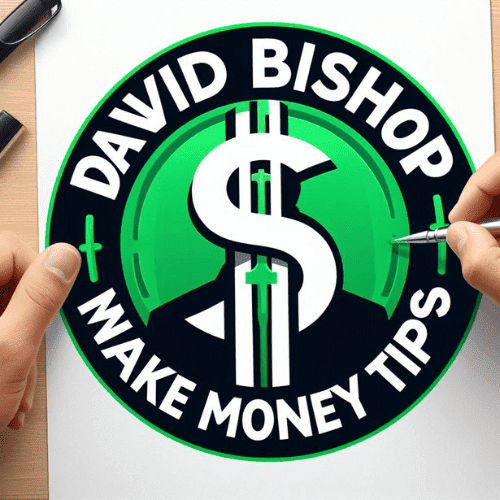As I dive into the world of search engine rankings, I recognize on-page SEO as a crucial player in the visibility game. It’s the unsung hero that, when done right, not only helps my pages climb the search ladder but also ensures that my readers come first. This is not about tricking algorithms but about crafting a seamless user experience that both search engines and humans love.
I know that it’s easy to get caught in a tangle of keywords and technical details but remember, SEO isn’t just about the bots. I’m here to serve up valuable insight on how to refine your on-page strategy without losing sight of what really matters: your audience. Expect a deep dive into techniques that elevate your content and structure, turning every page into an invitation for readers and search engines alike.
So, as I set the stage for on-page SEO’s best practices, consider this: every recommendation I make is aimed at fostering an environment where usefulness is the cornerstone. Stay with me as I walk you through optimizing your content in a way that connects with your audience and satisfies search intent, ultimately giving your rankings a well-deserved boost.
Content Optimization: Crafting Content that Speaks to Your Audience
You can’t underestimate the power of well-crafted content. It’s the lifeblood of your website and crucial for on-page SEO success. My goal here is to show you how to optimize your content not just for search engines, but for the people who matter most: your audience.
Quality trumps quantity every time. That means focusing on relevant, engaging content topics that resonate with your readers. Hit the sweet spot with your content by integrating keywords naturally. Your readers should never stumble over a clunky phrase stuffed in for the sake of SEO.
Remember, a strong content structure makes life easier for everyone. Break your text into easily digestible sections with clear headings and subheadings. This doesn’t just guide your readers through the article; it also helps search engines understand and rank your content.
Don’t shy away from mixing it up with multimedia. Images, videos, and infographics can explain complex ideas simply and keep visitors on your page longer, sending positive signals to search engines.
Now, be honest with yourself: Does your content align with what searchers are genuinely looking for? Every piece you publish should offer useful insights or solutions, directly addressing the intent behind the search queries that might bring someone to your page.
Technical Factors: Laying the Foundation for Rank-Worthy Pages
Now, I could tell you that content reigns supreme in the world of on-page SEO, and I wouldn’t be steering you wrong. But the castle of content stands only as strong as its technical foundations. Ignore these, and your content might just sink into the depths of search engine oblivious.
Meta tags, for instance, are a swift handshake with search engines. A well-crafted title tag captures the essence of your page and beckons your audience. The meta description, a brief but compelling summary, can make the difference between a click and a scroll-by.
Then there’s the URL. A clean, descriptive URL not just guides a user, but also informs search engines what the page is about at a glance. Punctuate it with a relevant keyword, and you’re setting the stage for better relevance marking.
And let me talk about schema markup. This isn’t just jargon thrown around at SEO conferences. Schema markup speaks directly to search engines in a language they understand, helping them digest the context and content of your pages more effectively.
Mobile responsiveness still clashes swords with desktop dominance. With most searches now on smartphones, your website must perform impeccably on any device. Fail this, and you’re willingly turning away more than half of your potential visitors.
None of this matters if your page takes an eternity to load. Users are an impatient bunch. Speedy page load times are not just SEO-friendly, they’re user-mandated. If your page dawdles, users will bounce faster than you can say ‘page speed optimization.’
Building Credibility and Trust Through E-E-A-T
I believe establishing trust with your audience is non-negotiable. In the world of on-page SEO, this goes beyond just having a secure website or factual content; it’s about reflecting a deep understanding of your subject. Incorporating the tenets of E-E-A-T – Expertise, Authoritativeness, Trustworthiness, and now Experience – is crucial. Here’s my wrap-up on fortifying these pillars to escalate your rankings.
If you want to showcase content depth, you need to display a level of expertise. Share insights and information that aren’t just common knowledge. Research thoroughly, draw from unique experiences, and offer perspectives that signal a hands-on understanding of your topic.
Authoritativeness comes from not only what you know but who acknowledges what you know. Make your content stronger by backing it with credible sources. When other established entities in your space cite your work, it’s a vote of confidence in your authority.
Trust can be your biggest currency in the digital age. Maintain this by ensuring every piece of information on your site is accurate and up-to-date. If readers come across outdated or incorrect data, their trust – once broken – is hard to rebuild.
And finally, remember SEO isn’t a one-off task. It’s an ongoing commitment to your audience. Keep learning, stay updated with the latest in your field, and routinely revise your content. This dedication not only boosts your search engine standing but turns first-time visitors into loyal readers.



